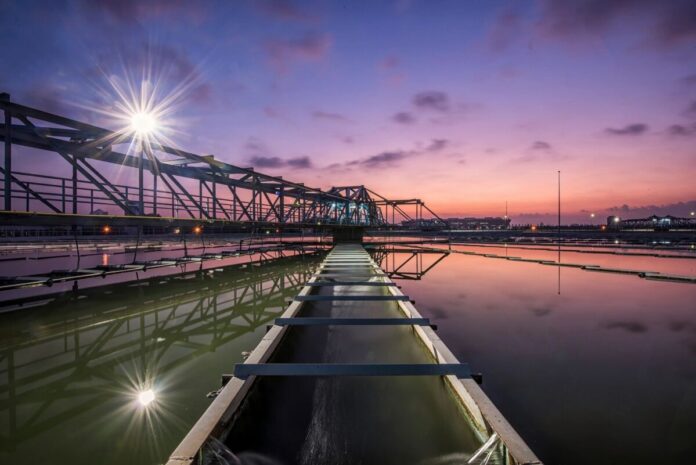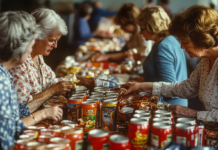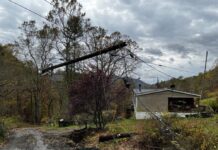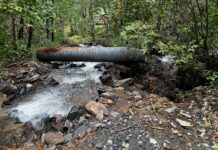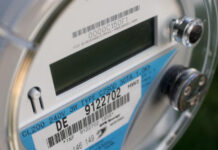Now there’s one more thing people living in cities have to worry about: Having their water system hacked, which is what happened a week ago in Florida. The hack was caught because an employee was sitting there at the screen, watching someone on the other end of the connection move his cursor around and program the system to dump excess chemicals into the drinking water.
It wasn’t a sophisticated hack, but what if no one had been in front of that computer at the time? It’s also a warning that having remote-viewing software like Team Viewer on your computer can leave your computer–and any system to which you are attached–open to hacking.
I haven’t been on city water since 1998, having lived in homes with wells and now a spring, so we’re safe from hacking of the water system, but we are in the minority. The CDC says that 82 percent of the population relies on municipal water systems. My guess is that when you consider people whose workplace uses city water, that number is even higher.
That raises the question about other utilities: Are sewer or waste water facilities protected? What about natural gas? Again, having a septic system and using propane protects many rural folks, but what if a malicious hacker started dumping raw sewer into waterways that normally receive only treated waste water? Or what if they cut off natural gas to a major city in the North East on one of the coldest nights of the year?
Water for Drinking and More
We’ve written a great deal about the importance of storing food over the past year, but little about storing water for a post-SHTF situation. This is primarily because it is difficult to store sufficient water to last a family for months.
For example, we currently have one-and-a-half cases of bottled drinking water, five five-gallon storage containers, and a blue 55-gallon drum. That should cover us for a week or two, but not for months.
Luckily, we have redundant sources of water: Our spring fed system, three streams on our property, and plenty of rain water that can be collected and stored.
Because water storage is usually limited, obtaining and purifying water is critical to your long-term survival. This is easier in some parts of the country than others. It’s not just an urban/rural thing, but an East Coast/West Coast issue. Much of the West, especially the Southwest, have little or no surface water available for emergency use. Even when urban environments have naturally occurring water, you have to be concerned about contamination from everything from oils and chemicals to feces and trash.
We break our water needs into two categories: Pure water for drinking, cooking and cleaning, and what I like to call “clean enough” water for flushing toilets (assuming flushing is still possible without causing a backup), watering plants, watering livestock and pets, and for other uses that do not require human consumption. The former needs to be purified, the latter usually does not.
Methods of Water Purification
Once you have collected water for drinking and cleaning, you have to clean or purify it. For flushing your toilet, pouring the water through a t-shirt or other cloth to filter out any large debris may be sufficient. For human consumption we recommend you have the capability to do any of the following:
Mechanical Filtering
Filtering water uses a pump or gravity to force water through a media that filters the water, removing foreign substances. Depending on the type and size of filter media used, it may (or may not—research and read the instructions before you buy ) remove sediment, chemical odors and taste, bacteria, parasites like cryptosporidium, and viruses.
Your best bet is to buy a filter that matches your needs. People in cities or around farms with extensive chemical use may need a filter that removes chemicals while someone sourcing their water from a mountain spring probably has to be more worried about giardia and crypto. Whichever method you select, a pre-filter that removes sand, dirt, and bits of organic matter will extend the life of your filter. Pre-filters can usually be cleaned and re-used while most mechanical filters have a limited lifespan. For example, we have filters that last only 125 liters while others re rated for to 10,000 liters. Obviously, the latter are more expensive and much larger.
Because we follow the layered approach to prepping, we have small filters like the survival straw and sports bottles that contain a filter, larger filters you must pump water through, and bulky gravity-fed filters that hold several gallons of water. We would generally use the latter in a fixed position and one of the pump filters on a hike or multi-day patrol. The smallest devices are good for bug out bags and vehicle survival kits rather than daily use because they have a limited capacity.
Boiling Water
Boiling water from an unknown sources for a couple minutes is usually sufficient to kill bacteria, protozoa, and viruses. It should be brought to a good, fast, rolling boil. Of course, you then have to wait for the water to cool before you can drink it, which is annoying. Our advice is to boil water at night to drink the next day.
Another down side of this method is that it consumes firewood that can be better used to keep you warm and prepare your food.
Boiled water is an excellent source of water for cleaning plates and silverware, which works best with warm water in any case. Boiling water for these and similar applications will allow you to save your water filter for consumption. Just make sure you have a large enough pot to boil a decent quantity of water.
Because pathogens sometimes are attached to grains of dirt or debris, it is a good idea to pour water through a few layers of cloth or some other pre-filter before you boil it.
Chemical Purification
Chemical purification can be as simple as putting a few drops of bleach into your water to using specially formulated chemicals designed to purify your water. (Generally available at any outdoor or sporting goods store.)
The standard rate for using bleach is two drops per quart or liter or eight drops per gallon. But don’t drink it immediately after treatment! Stir or shake the water to ensure the chlorine is mixed in and then let it sit for half an hour. When you go to drink it, the water should have a very slight chlorine smell or flavor. If it does not, add half again as much bleach and repeat. If the bleach taste is too strong, then pour the water back and forth between two containers and let it sit for several hours until the taste dissipates. It should not smell like a swimming pool.
Portable Aqua is probably the best-known brand of water purifying tablets sold to hikers, but similar products are made by other outdoor brands. Most are based on chlorine or iodine.
Chemical purification is good for a short period of time, but the iodine tablets are not intended for extended use. Iodine can also leave a funny taste, which is overcome by adding a drink mix from an MRE or another powdered drink mix.
Distilling Water
If your backup water has an unknown chemical component in it, one of the best methods of purification is steam distillation. This works like a still, but instead of brewing moonshine, you are creating pure water.
Distillation requires that the suspect water to be boiled, releasing any volatile compounds that have a lower boiling point than the water. Once the water reaches 212 degrees, the steam is captured and routed through a condenser which converts the steam back into water. The different temperatures at which the water and contaminants go from liquid to gas allows the pure water to be separated from the oil or other chemical contaminants. Just keep in mind that there may be both chemicals that boil off first and those that boil of later. Dump out the last bit of water prior to boiling to avoid vaporizing any residual chemicals.
Like boiling, distillation requires a good fuel source and appropriate equipment. In some environments, you may be able to use a solar cooker to evaporate water and collect the condensation. The UV light in sunshine may also inactivate some viruses.
If distilled or boiled water tastes flat, shake it several times or pour it back and forth between clean containers. This will help re-oxygenate the water and should improve its flavor.
Water from a Well
While a hand-pump well was traditional a century ago, electrical power greatly expanded both the amount of water that can be pumped and the depth from which it is sourced. The trade off for this conveniences is that when the power goes off, so does you well pump. Many wells can accommodate a manual pump. If you live in a dry area with little or no surface water, a manual well from a company like Apocalypse Well Pumps is an excellent investment.
You can also look into solar or wind-powered pumps. Pumping water into an elevated water tank or cistern when the wind blows or the sun shines can give you running water when the power is out.
Transporting Water
Based on what I see on reality TV and YouTube videos about living off-grid, five-gallon pails are frequently used for transporting water. We do have these buckets, but we prefer to use square or cubical storage containers that have a spout and molded handle. Not only are these easier to carry, they are less prone to spillage. Many have a spout that can be opened or closed. This makes getting a drink or filling a toilet tank much easier than tipping over a big, heavy bucket.
Sewage Alternatives
If you have a septic system that is gravity fed (most, but by no means all, are), then you are in pretty good shape and can continue flushing and pouring water down the drain. If your septic needs a pump, then you have to come up with a way to provide some electricity before things back up.
Likewise, many municipal wastewater and sewage systems rely on pumps and will cease to function without electricity. This could leave you up you-know-where without a paddle.
For short-term temporary emergencies, portable camping toilets work fine. In most cases, they allow you to bag your waste. The problem in a long term situation is, what do you do with all those bags?
The Two-Bucket System
If you require an indoors solution, consider the two-bucket method. In this method, you take two five-gallon plastic buckets, preferably with lids. Label one bucket #1 and the other #2 and make your deposits separately in the appropriate bucket. The key here is that your pee and your poop need to stay separate, if possible. Also, don’t put toilet paper in the pee bucket.
Once you have done your thing, cover your poop with a layer of sawdust, cedar bedding, shredded paper, or another carbonaceous material. This will help keep it from smelling. Then put the lid on.
Note that you can buy toilet seats designed for five-gallon pails.
Dump the pee bucket every day or twice a day if you prefer. You can dump it on your compost pile or, after adding an equal amount of water, on any non-fruit bearing tree or bush. Urine contains urea and will help boost the nitrogen in the soil. Rinse the bucket with your “clean enough” water and return it to service.
If you are using sufficient carbon material , the #2 bucket does not need to be dumped daily. Dump it when it is ripe enough that you can stand to open it or when it is two-thirds full, whichever comes first
Don’t just dump your bucket of poop in the woods. Walk it down hill from your water source. Dig a hole more than deep enough to contain the contents of the bucket, dump it in, cover it up, and rinse the bucket well. If you have sufficient cleaning supplies, spray it with something that kills germs and let it rest for a minute or two before wiping and rinsing. Once everything is clean, it goes back into service.
Out Houses
If your locality allows it, building an outhouse before a SHTF scenario is an excellent solution to the no-sewer problem. If they don’t allow it, then you can wait and build one a couple weeks after things fall apart. At that point, it’s highly unlikely anyone is going to try to stop you. Just build it down hill from your residence, garden, and water source.
I’m not going to go into instructions other than to say the deeper you go the longer it will last, and adding a scoop of sawdust or similar material will cut the smell. Traditionally, lime has been added to minimize the smell and number of flies.
Composting Toilet
Another option best installed pre-grid-down is a composting toilet. Just be aware that most of these use an electric fan, so you may want to look into a solar model.
Other Options
There are other options, from slit trenches to cat holes to just pissing behind any random bush. You may find a combination of solutions works for you, depending on the time of day and temperature.
Hygiene is Critical
Since we’re talking about poop, which can spread germs and cause a local epidemic, it’s important to stress cleanliness. After COVID-19, we’re probably all stocked up on hand sanitizer, but make sure you have some good old fashioned soap. Washing your hands after you wipe your butt is just good, common sense.
Commercially available cleaning products and bleach will kill lots of germs and help keep surfaces clean and sanitized. If you run out of those, consider making natural, cleaning solutions from herbs and/or essential oils. Soap is also relatively straight forward to make, especially if you butcher your own meat and burn wood for heat. Google the directions for homemade soap and disinfectants, print them out, and watch a few videos now, while you still can.
Food, Water and Shelter
Food and water are two of the top three things you need for prepping, it is also the least expensive prep. A bottle of bleach, a good quality filter, and half a dozen five-gallon containers and you’ve made a good start. What’s stopping you?

